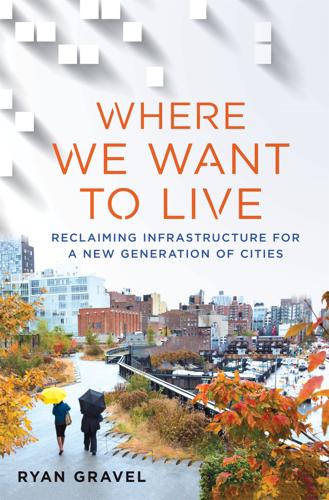
Where We Want to Live
by
Ryan Gravel
Published 2 Feb 2016
Perhaps more important, the design confirms that even in a real estate climate dominated by big development teams and celebrity architects, thoughtful, creative planning ideas—initiated at the grass-roots level—can lead to startlingly original results.11 Friends of the High Line was able to maintain those high standards, and the project has been acclaimed around the world largely because of their attention to design. It’s hard to imagine that a more conventional outcome would have compelled enough people to climb up onto the High Line and make it the top tourist destination in New York City. By drawing the public into a civic dialog through its ideas competition, Friends of the High Line embedded expectations for high-quality design into the very essence of the project, and this strategy has produced staggering results.
…
Only then can we even begin to achieve “a state of physical, mental, and social well-being.” 12 An Infrastructure for Economic Prosperity Every visit to the High Line is shocking. From the Whitney Museum and other designer buildings to hot local restaurants and celebrity sightings, there is always something new. Every corner of New York seems to be booming, but between Gansevoort and West 34th Streets, where the High Line connects block to block through the air, the construction intensity has a uniquely provocative vibe. More than any waterfront park or public square in the city, the High Line emanates a kind of good-looking lifestyle that, so far, seems to be timeless.
…
The urgent pressures of gentrification notwithstanding, the High Line has maintained a valuable integrity to its place in the world and has created a built memory of time that otherwise would not exist. By almost any account, its only shortcoming is that people just love it too much. With its hordes of doting fans, looming tower cranes, and new landmark neighbors, it’s hard not to recognize the High Line as a new infrastructure of economic prosperity. Whether that brand of prosperity can translate to other cities, or even to other parts of New York, remains to be seen. For anyone trying, it’s important to understand that the High Line’s success has come within a historical context.

Vanishing New York
by
Jeremiah Moss
Published 19 May 2017
That initial rarefied state didn’t last, however. As the High Line’s hype grew, the tourists came clamoring. Today the High Line is another stop on the must-see list for out-of-towners. More than 7 million people visit every year, most of them tourists. Originally meant for running freight trains, the High Line now runs people, except where they jam together like spawning salmon crammed in a bottleneck. The park is narrow and there are few escape routes. I’ve gotten close to a panic attack, stuck in a pool of stagnant tourists at the most congested points. It was this overcrowding—of the High Line and the streets around it—that began to turn the tide of sentiment about the park.
…
One commenter on my blog wrote, “It needed to be said, but everyone else was afraid to say it.” What were people afraid of? Why couldn’t the High Line be criticized? As powerful as they are, it’s not like the Friends of the High Line are mobsters who would have somebody whacked. Right? But the High Line was—and, to some extent, remains—a sacred cow. We’re only supposed to see it as a triumphant icon of neighborhood preservation, a beautifully designed public space, and not as the hyper-gentrification juggernaut it also happens to be. Today the High Line has several more critics, but the most colorfully caustic has got to be art critic Jerry Saltz.
…
Aside from encouraging development and promoting the “most desirable” use of land, one purpose was “to facilitate the restoration and reuse of the High Line” as a public space, through, in part, “High Line improvement bonuses and the transfer of development rights from the High Line Transfer Corridor.” Bonuses along the corridor meant that if a luxury developer provided improvements to the High Line itself, such as stairways and public restrooms, that developer could build their condo towers even bigger. The High Line and the rezoning worked together, creating a recipe for what might be the biggest, fastest, most expensive development boom in New York City history.
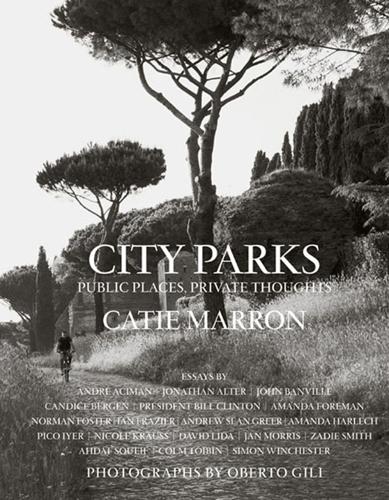
City Parks
by
Catie Marron
High Line, New York | ANDRÉ ACIMAN For Annapaola Cancogni THEN AND NOW THERE IS A MOMENT—and it seldom lasts more than that—when the High Line wears two seemingly incompatible faces: old face and new face. One needs to catch the fleeting alignment of the two, but there is never a guarantee that it will happen, and hoping that it might, or even trying to make it happen, could easily ruin the spell. But unless that alliance does happen, the High Line remains either a leafy, new promenade frequently overlooking the Hudson, or a refurbished elevated rail track that was once destined for demolition. The very neighborhood around the High Line, which recently bounced from grubby blue-collar to high-end gold coast, reflects the tale of this Janus-faced fusion, where a once-rotting, 1.45-mile-long, elevated eyesore, built eighty years ago over Tenth Avenue, can within seconds morph into a suspended high-tech, new-age, eco-friendly, cutting-edge green park where all of us must, each in our own way, eventually confront the insoluble enigma of then and now.
…
It is time that confers meaning to the High Line; time is the film we bring to everything we wish to see when we hope to amplify what our eyes are seeing. Time dilates the senses. Time is about the footprint, not the foot; the luster, not the light; the resonance, not the sound, the trace, not the thing. Time is how we fantasize, privatize, and ultimately seize and understand the beauty of what lies around us. Then and now. When you lean against the High Line’s railing and stare at the view from what was the trellised old El, it is about time that you want to think. I walked under the High Line exactly twenty years ago after leaving a dinner party on Horatio Street.
…
It still tunnels its way through the same buildings, unabashedly spying into private windows and offering stunning if sporadic vistas of the Hudson. The High Line bears all the features of urban art: part urban chic, part urban preservation, and part urban reconquista. The High Line has restored what seemed totally lost and foregone, and in the process brought out something totally unprecedented. The glam factor of the structure grows out of the exquisite symbiosis of grit with glitz. You can almost touch the mingling of the two, for the High Line makes no secret of its inner-city origins. Indeed, it proclaims its rough, in-your-face, hardscrabble provenance like a child who was born in nineteenth-century working-class squalor but has finally risen to the top without ever caring for damask or table manners.
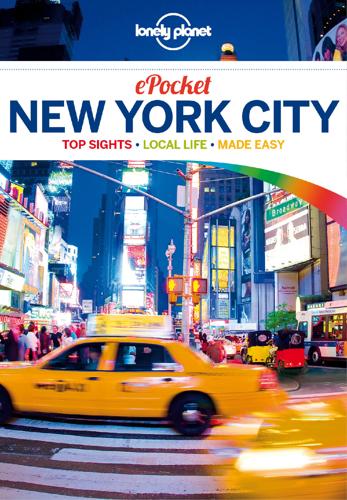
Pocket New York City Travel Guide
by
Lonely Planet
Published 27 Sep 2012
Top Tips › Start early at 30th St, wander south and exit at 14th St for a bite at Chelsea Market before exploring the West Village. If your tummy’s grumbling, tackle The High Line in the reverse direction, gelato in hand. › If you want to contribute financially to The High Line, become a member on the website. Members receive discounts at neighborhood establishments, such as Diane von Furstenberg’s boutique and Amy’s Bread in Chelsea Market. Take a Break The High Line invites gastronomic establishments from around the city to set up vending carts and stalls for to-go items. Expect a showing of the finest coffee and ice cream establishments during the warmer months.
…
The school also has an indoor facility open year-round. Check the website for daily class times. (www.newyork.trapezeschool.com; Pier 40 at West Side Hwy; classes $47-65, 5-week course $270; 1 to Houston St) Local Life Robert Hammond on The High Line Co-founder and executive director of Friends of The High Line Robert Hammond shares his High Line (Click here) highlights: ‘What I love most about The High Line are its hidden moments, like at the Tenth Ave cut-out near 17th St, most people sit on the bleachers, but if you turn the other way, you can see the Statue of Liberty far away in the harbor. Architecture buffs will love looking down 18th St, and up on 30th is my favorite moment – a steel cut-out where you can see the cars underneath.’
…
On June 9, 2009, part one of the city’s most beloved urban renewal project opened with much ado, and it’s been one of New York’s star attractions ever since. LOGAN MOCK-BUNTING/CORBIS © Don’t Miss Public Art In addition to being a haven of hovering green, The High Line is also an informal art space featuring a variety of installations, both site-specific and stand-alone. For detailed information about the public art on display at the time of your visit, check out www.thehighline.org/about/public-art. Secret Staffers As you walk along the High Line, you’ll find dedicated staffers wearing shirts with the signature double-H logo who can point you in the right direction or offer you additional information about the converted rails.
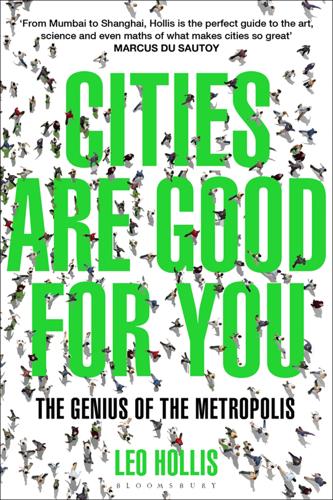
Cities Are Good for You: The Genius of the Metropolis
by
Leo Hollis
Published 31 Mar 2013
11 A Place Called Home Epilogue Notes Bibliography Acknowledgements A Note on the Author By the Same Author Preface On The High Line I start at street level and the elevator raises me at a steady pace into the air. I begin to see the city from a new perspective as the pavement recedes below me. There is something thrilling about being able to look down on the city, no longer part of the throng, above the bustle and fug of the traffic, even if only from this height. Manhattan is a place that has been transformed by verticality; one feels it even going the small distance from the ground at West 14th Street up to the High Line, 25 feet above the Meatpacking District. As the elevator door opens, one leaves the underworld of the everyday city and enters another urban realm.
…
As the elevator door opens, one leaves the underworld of the everyday city and enters another urban realm. The High Line Park was first imagined in 1999 when two local residents, Joshua David and Robert Hammond, dreamed of transforming the derelict elevated railway line that ran through their neighbourhood in west-side Manhattan. By this time, the old industrial wasteland had turned into a wilderness of grasses and weeds, a blight on the landscape resulting in the local landlords calling for its destruction. The two set up Friends of the High Line despite Mayor Giuliani signing demolition papers for the rusting ruin. By 2002, the city had changed its mind; three years later, the line was handed over to City Hall and architects started to think about how to transform it into a living part of the community.
…
The city is too complicated for a solitary definition, and perhaps it is one of our greatest mistakes to think of it as a singular, measurable quality. Rather than looking for a single explanation, or a unique function, we must consider it as the interaction of different, albeit defined, parts. Walking on the High Line It is places like the High Line that allow us to think again about the city and how it can make us happy. Throughout history, critics have warned against the city’s destructive power. The atomising effect of urban life has been a charge levelled by naysayers since the time of the very first city. Out of the ruins of ancient Babylon, an excavated tablet reveals what is perhaps the first anti-urban rebuke: The city dweller, though he be a prince, can never eat enough He is despised and slandered in the talk of his own people How is he to match his strength with him who takes the field?

Lonely Planet's Best of USA
by
Lonely Planet
Here you’ll be peering at videos through floorboards and debating the meaning of nonstatic structures while staring through a hole in the wall. TOP EXPERIENCE The High Line A resounding triumph of urban renewal, the High Line is a remarkable linear public park built along a disused elevated rail line. This aerial greenway attracts millions of visitors each year. CHRIS TOBIN / GETTY IMAGES © Great For… y Don’t Miss The third and final part of the High Line, which opened in 2014 and bends by the Hudson River at 34th St. 8 Need to Know Map; %212-206-9922; www.thehighline.org; Gansevoort St; h7am-11pm Jun-Sep, to 10pm Apr, May, Oct & Nov, to 7pm Dec-Mar; gM11 to Washington St, M11, M14 to 9th Ave, M23, M34 to 10th Ave, bL, A/C/E to 14th St-8th Ave, C/E to 23rd St-8th Ave; F 5 Take a Break A cache of eateries, from sushi joints to creperies, is stashed within Chelsea Market at the 14th St exit.
…
o Top Tip Entrances are at Gansevoort, 14th, 16th, 18th, 20th and 30th Sts. History It’s hard to believe that the High Line was once a disused railway that anchored a rather unsavory district of ramshackle domestic dwellings and slaughterhouses. The tracks were commissioned in the 1930s when the municipal government decided to raise the street-level tracks after years of deadly accidents. By the 1980s, the rails became obsolete (thanks to a rise in truck transportation). Petitions were signed by local residents to remove the eyesores, but in 1999 a committee called the Friends of the High Line was formed to save the tracks and to transform them into a public open space.
…
BEST OF USA TOP SIGHTS, AUTHENTIC EXPERIENCES Contents Plan Your Trip USA’s Top 12 Itineraries If You Like… Month by Month Get Inspired Family Travel Need to Know New York City Central Park Statue of Liberty Brooklyn Bridge MoMA The High Line Broadway Walking Tour: Urban Icons Walking Tour: SoHo Shops Sights Tours Shopping Entertainment Eating Drinking & Nightlife Where to Stay New England Fall Foliage Acadia National Park Freedom Trail Walking Tour: Freedom Trail Boston Sights Tours Shopping Entertainment Eating Drinking & Nightlife Salem Cape Cod & the Islands Nantucket Martha’s Vineyard Vermont New Hampshire Coastal Maine Washington, DC National Mall Capitol Hill Walking Tour: Capitol Hill Sights Activities Tours Entertainment Eating Drinking & Nightlife Chicago Millenium Park Art Institute of Chicago Walking Tour: Art of the City Sights Activities Tours Shopping Entertainment Eating Drinking & Nightlife Miami The Everglades Art Deco Miami Walking Tour: Art Deco Miami Sights Activities Entertainment Eating Drinking & Nightlife Orlando & Walt Disney World Walt Disney World Resort Orlando New Orleans Mardi Gras St Charles Avenue Streetcar Sights Tours Entertainment Eating Drinking & Nightlife Las Vegas Cruising the Strip Sights & Activities Entertainment Eating Drinking & Nightlife Grand Canyon National Park South Rim Overlooks South Rim North Rim Route 66 Flagstaff Los Angeles Santa Monica Pier Hollywood Griffith Park Walking Tour: Venice Sights Activities Shopping Entertainment Eating Drinking & Nightlife San Francisco Golden Gate Bridge Cable Cars Alcatraz Ferry Building Chinatown Sights Tours Shopping Entertainment Eating Drinking & Nightlife Where to Stay Yosemite National Park Glacier Point Half Dome Yosemite Valley Waterfalls Sights Activities Tours Eating In Focus USA Today History Food & Drink Sports Arts & Culture Survival Guide Directory A–Z Accommodations Customs Regulations Climate Discount Cards Food Electricity Gay & Lesbian Travellers Health Insurance Internet Access Legal Matters Money Opening Hours Public Holidays Safe Travel Telephone Time Tourist Information Travellers with Disabilities Visas Volunteering Women Travellers Transport Getting There & Away Getting Around Behind the Scenes Our Writers Welcome to the USA America is home to such diverse cities as Los Angeles, Las Vegas, Chicago, Miami, Boston and New York City – each a brimming metropolis whose name alone conjures a million diff erent notions of culture, cuisine and entertainment.

The Rough Guide to New York City
by
Rough Guides
Published 21 May 2018
That Brutalist structure was initially a controversial addition to the neat townhouses it neighboured, but it became beloved, and plans to add on to it were frequently shouted down. Unable to expand, the Whitney voted in 2010 to move downtown to the base of the High Line, commissioning Piano to design the new museum. Its former digs, meanwhile, have become the Met Breuer. The High Line Gansevoort St to 34th St, between Tenth and Eleventh aves; entrances at Gansevoort, 14th, 16th, 18th, 20th, 23rd, 26th, 28th and 30th sts • Daily: June–Sept 7am–11pm; April, May, Oct & Nov 7am–10pm; Dec–March 7am–7pm; Tues at dusk April–early Sept stargazing nights, weather permitting • Free, though some organized tours $15 • 212 500 6035, thehighline.org • Subway A, C, E to 14th St; L to Eighth Ave; C, E to 23rd St ; #7 to 34th St-Hudson Yards An ambitious renewal project that spans – and unites – the Meatpacking District, West Chelsea and a burgeoning area near the West Side rail yards, the High Line asserts itself as a new form of urban park.
…
The High Line Gansevoort St to 34th St, between Tenth and Eleventh aves; entrances at Gansevoort, 14th, 16th, 18th, 20th, 23rd, 26th, 28th and 30th sts • Daily: June–Sept 7am–11pm; April, May, Oct & Nov 7am–10pm; Dec–March 7am–7pm; Tues at dusk April–early Sept stargazing nights, weather permitting • Free, though some organized tours $15 • 212 500 6035, thehighline.org • Subway A, C, E to 14th St; L to Eighth Ave; C, E to 23rd St ; #7 to 34th St-Hudson Yards An ambitious renewal project that spans – and unites – the Meatpacking District, West Chelsea and a burgeoning area near the West Side rail yards, the High Line asserts itself as a new form of urban park. It’s a stunning transformation of a disused railway that was built between 1929 and 1934, once moving goods and produce around lower Manhattan, then going on to spend a number of years rusted, overgrown and threatened with demolition. Concerned activists fought to stave off what seemed inevitable, but it wasn’t until two locals formed the Friends of the High Line in 1999 that the tide began to turn. A deal with the city ensued, construction began in 2006, and the first phase opened in summer 2009 to big crowds and rave reviews; a second section debuted in June 2011; and what seemed to be the final one in autumn 2014 – though additional flourishes continue.
…
Now more a haven for pasta-and-red-sauce tourist traps than Italians, Little Italy next door is slowly being swallowed by Chinatown’s expansion; while the Lower East Side, traditionally the city’s gateway neighbourhood for new immigrants – whether German, Jewish or Hispanic – has been almost totally gentrified by a younger crowd, but preserves its history in the thought-provoking Tenement Museum. The East and West villages are known for their gorgeous, tree-lined streets, bohemian history and their hip bars, restaurants and shops. Chelsea has established gay venues, a happening gallery scene and outdoor gems in the High Line and Hudson River Park developments; just below it, the Meatpacking District holds the Whitney Museum of American Art and plenty of high-fashion boutiques. The areas around Union Square and Gramercy Park feature some lovely skyscrapers, including the Flatiron Building, that nicely complement the green spaces, as well as an exciting eating scene.
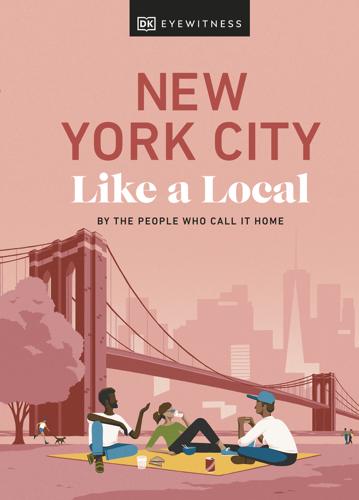
New York City Like a Local
by
Dk Eyewitness
And, whatever the season, every morning there seem to be more dogs than people on the Lawn Meadow. » Don’t leave without practicing your vinyāsa flow at a class with Park Slope yoga studio Bend + Bloom in summer. g Green Spaces g Contents Google Map THE HIGH LINE Map 1; entrance via 30th Street and 11th Avenue, Hudson Yards; ///wipe.spray.goods; www.thehighline.org Nowhere better symbolizes New York’s ingenuity than the High Line. On what was once an elevated train track set for demolition, the urban park winds around fancy new apartment blocks – each twist and turn offering a new view and patch of flora. It’s no surprise that locals often commute through the park, an obligatory coffee in hand; less tooting traffic, more pleasant scenery.
…
g Contents OUTDOORS Green Spaces Live Sports Venues Community Gardens and Urban Farms Streets and Alleys Nearby Getaways Take a Tour: A perfect day out on the Upper West Side g OUTDOORS g Contents Green Spaces New York’s parks aren’t just open spaces. They’re gathering spots, birthday venues, date locales, and much-needed respites from the city’s grid of steel, brick, and concrete. g OUTDOORS g Contents Green Spaces WASHINGTON SQUARE PARK PROSPECT PARK THE HIGH LINE ST. NICHOLAS PARK CENTRAL PARK BRYANT PARK BROOKLYN BRIDGE PARK g Green Spaces g Contents Google Map WASHINGTON SQUARE PARK Map 1; entrance via Washington Square North, Greenwich Village; ///points.stands.waddle Washington Square Park feels like the center of the universe. NYU students discuss politics on the lawns, colleagues rendezvous for alfresco meetings, buskers play peppy tunes, and old-timers people-watch from the benches.
…
g Streets and Alleys g Contents Google Map NINTH AVENUE Map 1; Ninth Avenue, Meatpacking District; ///label.richer.rocky Named for its industrial past as a slaughterhouse hub, the Meatpacking District is now a high-fashion neighborhood with a likewise cooler-than-cool cohort of locals. This is best seen on Ninth Avenue, where fashionistas and that-model-you-know-from-TV can be spotted clip-clopping down the street. It feels like a vestige of old New York, especially if you carry on to Gansevoort Street, with its cobblestones. This is also a great place to start the High Line, where the magic continues above street level. g OUTDOORS g Contents Nearby Getaways Of course New Yorkers love their city, but sometimes a change of scene is just what’s needed. Fortunately, the Big Apple has various tempting day trips right on its doorstep. g OUTDOORS g Contents Nearby Getaways HOBOKEN SANDY HOOK TARRYTOWN THE ROCKAWAYS PRINCETON BEACON HARRIMAN STATE PARK g Nearby Getaways g Contents Google Map HOBOKEN 15-minute PATH train ride from Midtown A hop, skip, and a jump (and a bus ride) away across the Hudson, in New Jersey, is this cobblestone-clad city.
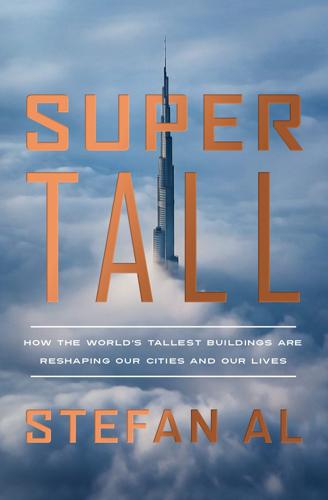
Supertall: How the World's Tallest Buildings Are Reshaping Our Cities and Our Lives
by
Stefan Al
Published 11 Apr 2022
While air rights transfers fueled the super slenders in Billionaire’s Row, endangering Central Park, elsewhere in the city they were arranged to protect a park. The city had enabled the transfer of air rights around the High Line, a park planned on an abandoned elevated freight line in Chelsea, to nearby land parcels. The air rights transfers ensured more light, air, and views in the park, as well as even helping to pay for it. The High Line linear park has become one of New York’s premier tourist attractions. In 2019, it drew more than 8 million visitors, more than the Statue of Liberty. In the meantime, West Chelsea’s mid-rise skyline of industrial warehouses became intermixed with contemporary high-rises designed by celebrity architects, with condominium towers by Jean Nouvel, Bjarke Ingels, and Zaha Hadid.
…
Unlike Central Park’s bucolic views, the elevated High Line gives tourists a novel way to experience the city’s street life, including panoramas of skyscrapers and yellow cabs. Its success has inspired similar projects worldwide, establishing the so-called High Line Effect.34 As an architect working on large-scale projects in the years after the High Line’s opening, I experienced the project’s global appeal. Even in cities lacking any elevated freight lines or air rights transfer scheme, it seemed like there was always someone in the room who wanted to add a High Line. However, the project’s thrill faded when the rapid gentrification of the surrounding neighborhood became apparent.
…
The air rights transfer scheme did not force developers to create affordable housing. It had accelerated gentrification, displacing lower-income residents. Even New York’s iconic hot dog vendors couldn’t compete with the better-capitalized vendors in applying for vending spots along the park.35 The legacy of the High Line is even more at risk at its final stretch, Hudson Yards, where the selling of air rights created a luxury high-rise cluster of new magnitude to almost unanimous criticism. In 2010, developers acquired the air rights above the thirty tracks of the Long Island Rail Road railyard, with plans to build the largest private real estate development in US history.
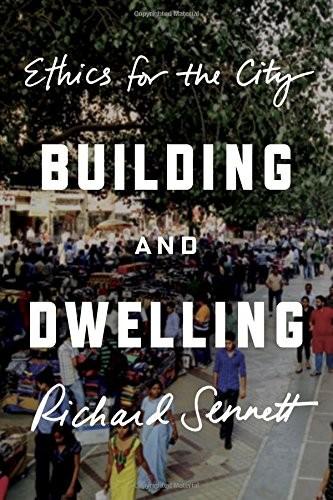
Building and Dwelling: Ethics for the City
by
Richard Sennett
Published 9 Apr 2018
In the same way, perceptible artifice marks Vaux’s bridges in Central Park, with their play of visible-at-ground-level and invisible-beneath derived from the earlier British ha-ha. In sum, the sociable ethic entails a suspension of reality; theatre does the suspending. The High Line is one modern parallel to the landscape work Olmsted and Vaux did in Central Park. If you were homeless in the 1960s, you climbed up a set of disused railroad tracks on the west side of Manhattan to sleep rough; if you were gay, you went there for anonymous sex; day and night the railway tracks served as a drugs bazaar. ‘Everyone’ knew the High Line would have to come down; a few people who were not included in ‘everyone’, notably the architect Elizabeth Diller, thought differently.
…
‘Everyone’ knew the High Line would have to come down; a few people who were not included in ‘everyone’, notably the architect Elizabeth Diller, thought differently. She noted that interesting weeds sprouted in the crevices of the railway tracks. With the innovative landscapers James Corner and Piet Oudolf, she imagined that railroad tracks + interesting weeds = a new kind of urban promenade. This proposition proved a great success. The High Line now attracts large numbers of natives out for a stroll as well as tourists drawn to the novelty of the place. One connection to Olmsted lies in the artifice of the planting itself: on this unlikely terrain Piet Oudolf planted species that do not cohabit on the ground. The landscaping combines ruderals, which are fast-growing plants that tend to die young, that is, most weeds, but also annual flowers; competitors which tend to crowd others out, but commit floral suicide by exhausting nutrients in the soil, as many grasses do; and stress tolerators like sea kale which need protection to get going, but once established do well in low-nutrient environments.
…
The landscaping combines ruderals, which are fast-growing plants that tend to die young, that is, most weeds, but also annual flowers; competitors which tend to crowd others out, but commit floral suicide by exhausting nutrients in the soil, as many grasses do; and stress tolerators like sea kale which need protection to get going, but once established do well in low-nutrient environments. The planting scheme in the High Line, using a system of tray-shaped enclosures, keeps the three going all at once, producing an illusion of ‘natural’ biodiversity for the visitor.27 In New York and other big cities, parks and playgrounds can be built in other unlikely places, again following Olmsted’s tie between artificial and sociable space.
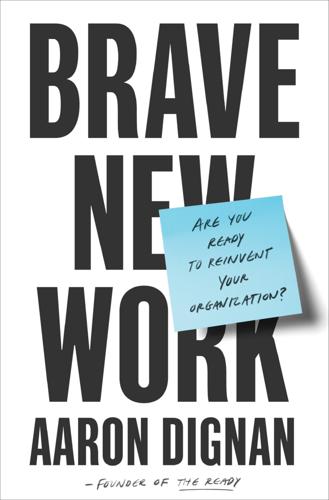
Brave New Work: Are You Ready to Reinvent Your Organization?
by
Aaron Dignan
Published 1 Feb 2019
Alternatively, our planner could look up and notice that an abandoned elevated railway running from the Meatpacking District to Chelsea has been colonized by wild plants, creating what looks like a linear park in the sky. That’s exactly what Joshua David and Robert Hammond noticed before they founded Friends of the High Line, a nonprofit dedicated to the railway’s preservation and reuse as a public park. Upon opening, the High Line was an instant phenomenon, and today it attracts more than five million visitors a year. In an unexpected twist, the buildings and real estate around the park, previously an eyesore, have now skyrocketed in value. The areas along the High Line are among the most desirable in the city. All because someone started with what was (almost) there. The history of human innovation is a story of happy accidents.
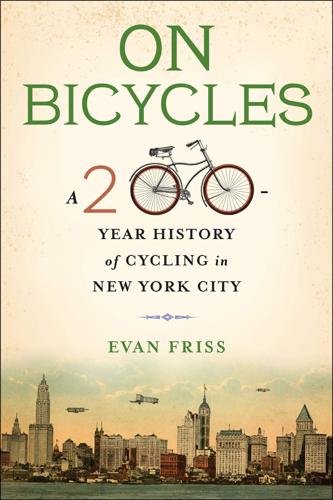
On Bicycles: A 200-Year History of Cycling in New York City
by
Evan Friss
Published 6 May 2019
Although Citi Bike and Lyft may seem like an unnatural pair, Lyft imagines an integrated fleet of cars, scooters, and bikes, all electric.6 On my regular, nonelectric, and perhaps soon to be vintage Citi Bike, I pedaled over to the High Line, one of a number of rails-to-trails projects across the country where defunct transportation corridors have morphed into inviting spaces for walkers, hikers, and cyclists. Bicycles are, however, not invited to tour New York’s High Line. Those arriving by Citi Bike have to dock their wheels before climbing a set of stairs. Despite calls for one (on and off since January 1869) there is still no elevated bicycle highway in Manhattan. Perched a couple of stories off the ground and running over the west side of Manhattan, the High Line welcomes millions of visitors who amble between buildings and in their shadows, traversing a set of remnant elevated railroad tracks that have been handsomely woven into well-manicured gardens.
…
Perched a couple of stories off the ground and running over the west side of Manhattan, the High Line welcomes millions of visitors who amble between buildings and in their shadows, traversing a set of remnant elevated railroad tracks that have been handsomely woven into well-manicured gardens. What was once a site for transporting cargo, defined by smoke and deafening loudness, has become a space littered with gourmet food carts and carefully curated art installations (and too many visitors). The crown jewel of the High Line is a descending amphitheater, which invites guests to sit on the oversized, wood-planked stairs and watch, through a series of glass panels, the street that lies beneath them. Like Parisians at a café, they watch the city breathe in and out. Taxis speed across the window. Pedestrians march up and down, left and right.
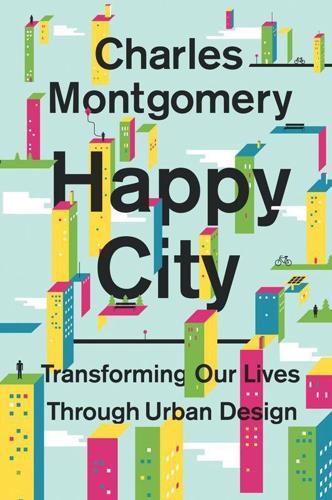
Happy City: Transforming Our Lives Through Urban Design
by
Charles Montgomery
Published 12 Nov 2013
Underperforming or unused transportation infrastructures are fine terrain for biophilic retrofits. The High Line, the decommissioned elevated rail line converted into a nineteen-block linear park on Manhattan’s West Side, is most famous for the bird’s-eye glimpses it offers into offices, private living rooms, and down to the street from viewing platforms that turn evening traffic into rivers of light. But much closer are hundreds of species of flora, from chokecherries and willows to creeping raspberries and autumn moor grass, much of which had already begun to colonize the abandoned platform before its conversion. The High Line’s natural caress draws visitors into a playful intimacy.
…
Since this park opened, urbanists in every city have clamored for their own High Line, but every city is unique, and so are the opportunities. The City of Los Angeles, for example, is working to turn thirty-two miles of the desolate, concrete-lined Los Angeles River into an “emerald necklace” of parks and paths. Cities have more room for nature than we might think. The architecture firm partly responsible for the High Line, Diller Scofidio + Renfro, demonstrated this again a few dozen blocks north, in their renovation of Lincoln Center for the Performing Arts, where they created a green hillside by adding a new restaurant building to the Lincoln campus. A sloping, off-kilter roof (hyperbolic paraboloid is the technical name for the form) planted with green grass rears up from the plaza, inviting passersby to collapse on its vertical meadow.
…
From Chamberlain, Lisa, “Trying to Build the Grand Central of the West,” New York Times, December 28, 2005, www.nytimes.com/2005/12/28/realestate/28transbay.html (accessed January 24, 2011). Cheonggyecheon River: Vidal, John, “Heart and Soul of the City,” The Guardian, November 1, 2006. High Line: High Line and Friends of the High Line, “High Line: Planting,” www.thehighline.org/design/planting (accessed September 15, 2012). bacteria found naturally in soil boosts seratonin: “Can Bacteria Make You Smarter?” Science Daily, May 24, 2010, www.sciencedaily.com/releases/2010/05/100524143416.htm (accessed March 3, 2012). One study in Alameda: Pillemer, K., T.

Straphanger
by
Taras Grescoe
Published 8 Sep 2011
“It can easily be a place as leisurely as Venice,” he wrote in a 1961 manifesto, “a lovely pedestrian city.” And it was hard not to read the High Line as a pointed commentary on car culture: after piercing the modernist slab of the Standard Hotel, it detours into tiers of benches facing a glass wall that seems to be suspended over Tenth Avenue. The glass makes the roadway a piece of framed kinetic art, contrasting the very human scene of mothers with strollers with the vista of taillights of taxis and trucks rushing uptown. About halfway along the High Line’s three-mile course, I came across one of those automated parking garages where cars are stacked in an open steel framework five high, like so many battery hens in wire-mesh cages.
…
I think New Yorkers are really tired of waiting ten or fifteen years to see any kind of change. Whenever we create a public space, it’s amazing: people just materialize out of thin air in minutes.” After talking to Sadik-Khan, I strolled over to the Meatpacking District, and climbed several flights of stairs to the High Line, a disused New York Central rail line that has been turned into a gorgeous elevated promenade. Among rail spurs that curved into bricked-up warehouses, sumac, smokebush, and other native plants emerged from the joints between precast concrete planks; office workers with loosened ties and unbuttoned blouses lolled on benches, catching some sun.
…
If I lived in New York, I’d be a full-time straphanger, too. When I was in my thirties, I toyed with the idea of relocating, and Erin and I still talk about spending a year or two in Manhattan—an idea that gets more appealing as more streets get pedestrianized, the network of bike paths grows, and parks like the High Line open. The reality is we’d probably end up in more affordable Brooklyn, where some of our friends now live. In the meantime, we get to visit, and our first order of business almost always involves ducking into a subway station, to charge up our MetroCards. After all these visits, the subway is still revealing its secrets to me.
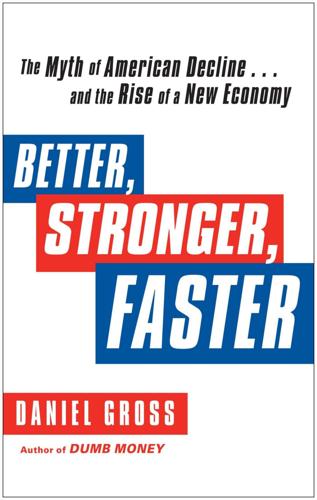
Better, Stronger, Faster: The Myth of American Decline . . . And the Rise of a New Economy
by
Daniel Gross
Published 7 May 2012
Both figures were records, and that’s a 46 percent increase in foreign visitors in five years. On December 21, 2011, New York City chose Craig and Lucy Johnson, a couple from England, as the honorary fifty-millionth visitors to the city. They had come to get married at the observation deck atop the General Electric building in Rockefeller Center. Walk the length of the High Line, the once-derelict elevated railroad track turned chichi promenade in Manhattan’s Meatpacking District, and you’ll scarcely hear a word of English spoken.4 When an Indian technology executive visits New York and spends money at the Gap and the Marriott, that’s calculated in the national accounts as an export.
…
The Second Avenue subway line, a $17 billion project several decades in the making and scheduled for completion in 2017, will be likely to have a similar effect. Even infrastructure that doesn’t really go anywhere can pay dividends. Build something new, something interesting, something useful, and it invites others to do the same. Take the High Line. The elevated freight rail line on the West Side of Manhattan was unused and in disrepair until a group of arty visionaries had the idea of turning it into a park. It has become a platform for billions of dollars of investment in stores and restaurants, condominiums, offices, and hotels. Not every place is New York, but many regions and many cities could benefit from the sort of network effects that New York enjoys.
…
Don’t wait for an infrastructure bank; scrape up some funds and start building and rebuilding commercial infrastructure on your own. In today’s economy the simple act of building something can send important signals, inspire action, and turn economic liabilities into assets. This dynamic can be seen in the High Line, the elevated railroad whose transformation from defunct rail bed to elevated park has in turn transformed the Manhattan neighborhood it runs through. Eighty miles north of Manhattan, another defunct elevated railway performed a similar function for a town that has been starved of capital. Since a fire in 1974, the railroad bridge that spanned the Hudson River at Poughkeepsie stood as an unused, rusting piece of infrastructure.

Streetfight: Handbook for an Urban Revolution
by
Janette Sadik-Khan
Published 8 Mar 2016
Many cities are looking to replicate protected bike paths and pocket parks and plazas, adapting infrastructure to reproduce what the High Line has done or how Citi Bike has fundamentally transformed the basic metabolism of New York’s streets. New York City has proved that a new road order is possible. New York today is a renewed and renewing city, one changed in ways that even a decade ago would never have been predicted. Young people today grow up knowing New York as a bikeable big city, where bright blue bikes line the streets and where they can marvel at the city from the High Line, Governors Island, and other creatively adapted spaces. Millions walk annually in Times Square unaware of the former roadway.
…
In Manhattan, we quickly proved that this intervention was no fluke by replicating our results at Ninth Avenue and 14th Street. The complex and traffic-choked street was left over from the mid-twentieth century when the area was filled with meatpackers and old-world industry. By 2007, the neighborhood was alive with new office space, the Chelsea Market retail complex, and nightlife. Preparations were under way for the High Line, near Ninth Avenue, guided by the leadership of New York’s planning commissioner, Amanda Burden, and it was becoming clear that the area would soon resemble the nearby upscale Greenwich Village, abandoning its bleak past as an after-hours drug-scoring, cruising strip. We reversed two uptown lanes on Ninth Avenue between 14th and 16th streets to downtown only.
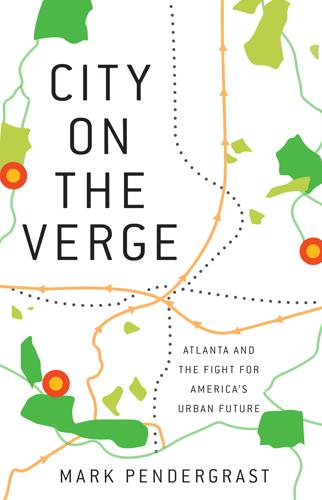
City on the Verge
by
Mark Pendergrast
Published 5 May 2017
His vision was revolutionary in scope. Other cities had converted abandoned railroad corridors into streetcar lines or trails, but none proposed to connect disparate rails in a loop within two or three miles of a major urban center. In 1999, Friends of the High Line was just forming, though construction on this mile-and-a-half elevated length in New York City would not begin until 2006, and the High Line would offer no transportation benefit, just an unusual, relaxing tourist attraction. The Atlanta BeltLine that Gravel envisioned would knit the city together again. Randal Roark was so impressed with his advisee’s thesis that he assembled key Atlanta figures to hear Gravel present it, just before Christmas in 1999, on the cusp of a new millennium.
…
The money was completely hypothetical, but now the BeltLine had at least made it into the requisite official document. In February 2004, Cathy Woolard and Ryan Gravel incorporated a nonprofit called Friends of the Belt Line, modeled after a similar grassroots organization in New York City that was promoting the High Line. Actress Jane Fonda, who lived in a loft condo near the defunct Atlanta rail corridor, narrated a promotional video for the BeltLine. Shortly before Gravel issued the first newsletter for the new organization, dated April 26, 2004, Woolard resigned from the city council in order to run for the US Congress, hoping to find more funding for the Atlanta transit loop in Washington.
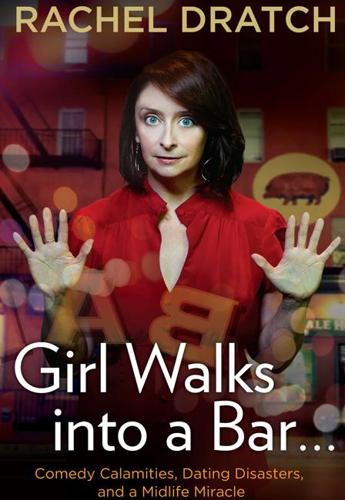
Girl Walks Into a Bar . . .: Comedy Calamities, Dating Disasters, and a Midlife Miracle
by
Rachel Dratch
Published 29 Mar 2012
Actually, I’m betting cavewomen were the original “co-sleepers” so the baby was right there anyway, not off in some “cave nursery” with little furniture and choo-choo trains on the walls. What I’m saying is, I don’t think cavewomen Ferberized. Of course, they also lived to age thirty and didn’t brush their teeth. But still. Over Theeeere! Over Theeeere! My father has absconded with the baby again. We are walking down the High Line in Chelsea. My dad loves manning the stroller. He is so into manning the stroller and gazing at his grandson that sometimes he breaks into a rapid pace, forgetting his surroundings and the surrounding party of people who are also there to bask in the light of the Glorious Manchild. These fugitive runs tend to coincide with cases of extreme temperature.
…
My dad grudgingly hands Eli over. Eli’s hands get warmed up. They come back to the house—where I’ve been waiting—blustering in from the cold. “Ahhhhh, I love this little guy! We had so much fun!” Eli got a good dose of the Icelandic Plan for Good Baby Health that day, courtesy of Paul Dratch. Now, at the High Line, in the summer heat, we have to chase my dad down the path, but he’s way ahead of us. He disappeared from sight long ago. We catch up to him finally and he brightly reports, “We’re having a blast! Aw, look at him. He’s my little buddy!” He’s oblivious to the fact that once again, he’s been hogging the baby.

The Nation City: Why Mayors Are Now Running the World
by
Rahm Emanuel
Published 25 Feb 2020
Having open areas within the city, away from the water, is also vitally important. For decades the residents of the neighborhoods of Bucktown, Wicker Park, Logan Square, and Humboldt Park expressed their desire to transform the old, abandoned elevated Bloomingdale rail line into a walking park, something similar to the High Line in New York City. So we made it happen. The 2.7-mile pedestrian walkway, known now as the 606 (for Chicago’s zip code), was started in 2013 and completed just two years later. We accessed something known as the Congestion Mitigation and Air Quality Improvement Program, which is part of the Federal Highway Administration, to pay for nearly half of the 606’s $95 million cost.
…
We replicated part of this program in Chicago and then went a step further, enacting a tax on Airbnb rentals that raised $3 million for housing for the homeless. (We later put another tax on these rentals to raise money for 150 beds for domestic violence shelters.) We drew inspiration from San Antonio’s Paseo del Rio and Hidalgo’s work on the Seine for the Riverwalk. The 606 was modeled after the High Line in New York City, just as the idea for our tech center came from Bloomberg’s Roosevelt Island center. Replacing all of the streetlights in Chicago with LED lights was an idea I stole from former Vancouver mayor Gregor Robertson. I stole it because it was a very smart idea. Other ideas have risen nearly simultaneously.

Building the Cycling City: The Dutch Blueprint for Urban Vitality
by
Melissa Bruntlett
and
Chris Bruntlett
Published 27 Aug 2018
Many of Gehl’s clients in smaller US cities such as Akron, Ohio, are now trying to figure out what to do with the interstate highways bisecting their city centers, and, unfortunately, Risom has no easy answer for them. “They think, ‘Oh, we’ll make the High Line,” says Rison, referring to a popular reclamation of an elevated freight rail line in Manhattan. “‘Or we’ll do this or that.’ But we have to tell them, ‘No you won’t, because this is eighteen times the scale of the High Line, in an area with one-twentieth the population density.’ We’ve got to be really careful with that. It’s romantic and it’s interesting. But I think it’s way more challenging than we imagine.”

The Startup Wife
by
Tahmima Anam
Published 2 Jun 2021
British Library Cataloguing-in-Publication Data A catalogue record for this book is available on request from the British Library ISBN 978 1 83885 248 1 Export ISBN: 978 1 83885 249 8 eISBN 978 1 83885 250 4 For Sarah Chalfant, with love Contents Cover Also by Tahmima Anam Title Page Copyright Dedication Prologue: No Such Thing One: Cyrus Jones and the Magic Funeral Two: Love and Marriage Three: I am what i am Four: I Heart New York Five: Kissing Frogs Six: Grown-Ups Seven: The Launch Eight: The Raise Nine: Killing Everyone Ten: Bringing up baby Eleven: FFS Twelve: The Cuddle Puddle Thirteen: BFFS Fourteen: Nobody Wants to be Married to the Messiah Fifteen: The End Acknowledgments Prologue NO SUCH THING People say there’s no such thing as Utopia, but they’re wrong. I’ve seen it myself, and it’s on the corner of Tenth Avenue and Fifteenth Street. Jules and I are summoned on an unseasonably hot day in April. We sneak out of the house, and six hours later we’re standing in front of a wide industrial building. Across the street is the High Line, then the West Side Highway, and beyond that, the joggers and the piers and the flat expanse of the Hudson. There’s no sign and no doorbell, just an enormous metal door, so we mill around and check the address. Minutes pass. I tell Jules we shouldn’t have lied to Cyrus, and Jules reminds me of all the ways Cyrus would have made this trip impossible.
…
I’ve been here dozens of times, but it’s different now: Gaby takes our coats and asks if we want anything to drink, and then he glides easily around the kitchen, opening drawers and taking out glasses. “We should invite people over more,” I say to Cyrus. “I love you,” Cyrus replies. We sit by the window with all the New York lights before us. Jules lives by the High Line now, just a few blocks south of Utopia, with bouquet after bouquet of buildings on either side. Gaby hands me a glass, and the wine goes down slow and warm. Again I feel a surge of desire for Cyrus; I study his face to see if he’s with me, but he’s looking at something on the other side of the room.

Palaces for the People: How Social Infrastructure Can Help Fight Inequality, Polarization, and the Decline of Civic Life
by
Eric Klinenberg
Published 10 Sep 2018
* * * Robust social infrastructure doesn’t just protect our democracy; it contributes to economic growth. One of the most influential trends in urban and regional planning involves converting old hard infrastructure, like discontinued rail lines and shipping docks, into vibrant social infrastructures for pedestrian activities. The High Line, which has driven billions of dollars of real estate and commercial development in Lower Manhattan, generated explosive social activity—and, alas, fueled runaway gentrification and displacement—is the most prominent model of this emerging urban form. But many other recent or current projects are reviving dead infrastructure with social infrastructure networks that attract residents, tourists, and businesses.
…
Across the planet, projects like these evince the value of social infrastructure, and the rising demand for it as well. Not long ago, Jane Jacobs and other prominent advocates for improving urban life argued that entrepreneurs, not governments, should build the spaces that support our social interactions. But places like the High Line have not emerged from the free market. They required thoughtful design, careful planning, and, crucially, enlightened leadership from the public sector. Often they advanced through partnerships, with nonprofit organizations and civic coalitions supporting initiatives that cities and states couldn’t undertake on their own.
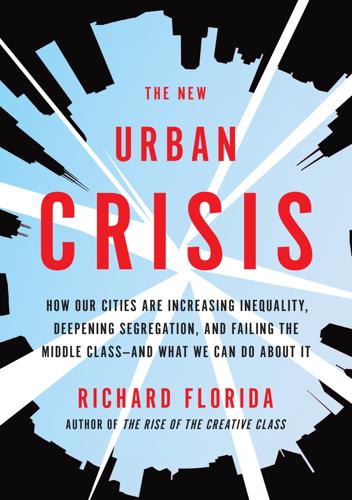
The New Urban Crisis: How Our Cities Are Increasing Inequality, Deepening Segregation, and Failing the Middle Class?and What We Can Do About It
by
Richard Florida
Published 9 May 2016
Nightclubs, galleries, and restaurants followed. As the neighborhood became less dangerous and more desirable, more affluent people came in, along with higher-end shops, restaurants, and even hotels. Some of the same old industrial spaces that had once housed artists’ lofts and studios were taken over by startups and tech companies. Then the High Line opened up and the neighborhood hit a tipping point, becoming an area of concentrated luxury development for an even wealthier group of people. Creatives accurately see their adversaries in today’s urban land wars as people who are far richer than they are. But even though the vast majority of creatives are not truly wealthy (Byrne, Smith, and Moby excepted), they are relatively advantaged by the standards of most urbanites and most Americans.
…
This system would provide greater incentives to put land in high-priced urban centers to its most efficient and productive use, increasing density and clustering.10 Furthermore, under the current property tax system, landlords and property owners not only have disincentives to add density and further develop their properties, but they are able to reap extraordinary rewards, or rents, by simply profiting from the increase in property values that is created by neighborhood upgrading and the ongoing appreciation of real estate values. The High Line Park in New York, for instance, created a huge increase in the land value of surrounding property, which generated windfalls for real estate developers, but little if any of those gains were returned to the park or the broader community. The same is true on a smaller scale in virtually every urban neighborhood that is seeing an influx of new residents, new restaurants and cafés, new and better schools, or reductions in crime.
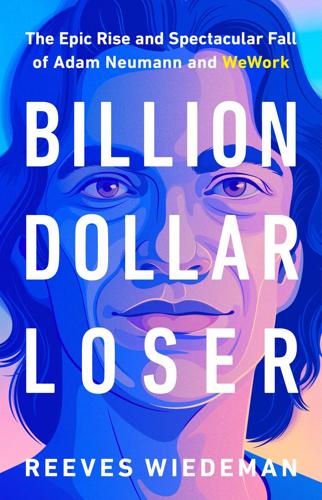
Billion Dollar Loser: The Epic Rise and Spectacular Fall of Adam Neumann and WeWork
by
Reeves Wiedeman
Published 19 Oct 2020
He outfitted the space with residential furniture and incandescent lighting, and left the windows at 154 Grand untinted, to let in more light. The individual offices would consist of glass cubes held together by aluminum supports. In theory, the cubes made each office feel bigger, allowing light to filter into every space while offering a modicum of privacy—like the new Standard hotel, straddling the High Line and making voyeurs of guests and passersby alike. The transparency conveyed a sense that everyone with a WeWork office was in this together. WeWork opened for business in February of 2010 with seventeen tenants—musicians, tech start-ups, an architect. The conditions turned off some office-seekers.
…
“Half day?” one manager asked an early employee who started packing up at 6:00 p.m. WeWork finished renovating its first floor at Empire State in just twenty-nine days, and was working on the others when Adam closed a deal for a third location, in the Meatpacking District, near the southern end of the High Line. Adam wanted to get started on the new space immediately. One morning, he conducted a walkthrough of a new floor at the Meatpacking location and proceeded to point out a number of minor blemishes. Several employees had pulled an all-nighter to get the space to this point, which Adam neglected to acknowledge.

The Rough Guide to New York City
by
Martin Dunford
Published 2 Jan 2009
Meatpacking District Creating a buffer between the West Village and Chelsea proper, the Meatpacking District between Gansevoort Street and West 15th Street, west of Ninth Avenue, has seen the majority of its working slaughterhouses converted to French bistros, after-hours clubs, wine bars, and fancy galleries.Though a few wholesale meat companies remain, the area is now very much designer territory, with Stella McCartney and Alexander McQueen among the fashion boutiques The High Line 112 One of New York’s most ambitious urban regeneration projects, the High Line (Wwww.thehighline.org) should be open by 2009 as a unique city park, slicing through the high-rises on a former elevated rail line. Constructed between 1929 and 1934, the line was effectively abandoned in 1980, and has been a rusting eyesore ever since. In 1999, a group of local business-owners joined together to press for the High Line’s preservation, and with the city finally on board, construction began in 2006. The first section will run from Gansevoort Street to West 20th Street, with phase two eventually extending 1.5 miles up to West 33rd Street in midtown.
…
In a telling confirmation of the district’s dramatic transformation (or deterioration into an “urban theme park,” according to some critics), the writers of TV series Sex and the City had Kim Catrall’s character move into a fictional apartment on Gansevoort Street in Season 3 (2000). The opening of the High Line (see box opposite) should only add to the area’s appeal, providing a tranquil greenway right into the heart of Chelsea. | Ninth and Tenth avenues As you head north up Ninth Avenue, the red-brick Chelsea Market fills an entire block between 15th and 16th streets. This high-class food temple is housed in the old National Biscuit Company (aka “Nabisco”) factory, where legend has it the Oreo cookie was created.
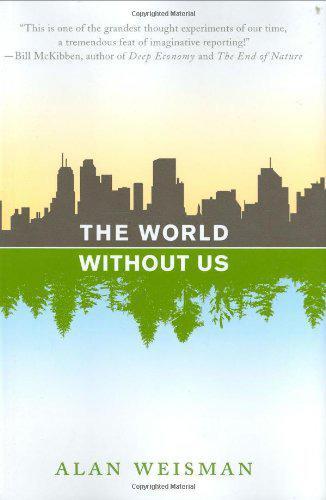
The World Without Us
by
Alan Weisman
Published 5 Aug 2008
In some places, the track emerges from the second stories of warehouses it once serviced into elevated lanes of wild crocuses, irises, evening primrose, asters, and Queen Anne’s lace. So many New Yorkers, glancing down from windows in Chelsea’s art district, were moved by the sight of this untended, flowering green ribbon, prophetically and swiftly laying claim to a dead slice of their city, that it was dubbed the High Line and officially designated a park. In the first few years with no heat, pipes burst all over town, the freeze-thaw cycle moves indoors, and things start to seriously deteriorate. Buildings groan as their innards expand and contract; joints between walls and rooflines separate. Where they do, rain leaks in, bolts rust, and facing pops off, exposing insulation.
…
Gao, F., et al. “Origin of HIV-1 in the Chimpanzee Pan troglodytes troglodytes? Nature vol. 397, February 4, 1999, 436–41. Gochfeld, Michael. “Dioxin in Vietnam—the Ongoing Saga of Exposure.” Journal of Occupational Medicine, vol. 43, no. 5, May 1, 2001, 433–34. Gopnik, Adam. “A Walk on the High Line.” The New Yorker, May 21, 2001, 44–49. Graham-Rowe, Duncan. “Illegal CFCs Imperil the Ozone Layer.” New Scientist, December 17,2005, 16. Grayson, Donald K, and David J. Meltzer. “Clovis Hunting and Large Mammal Extinction: A Critical Review of the Evidence.” Journal of World Prehistory, vol. 16, no. 4, December 2002, 313–59.

The Human Age: The World Shaped by Us
by
Diane Ackerman
Published 9 Sep 2014
I enjoyed their brief honking companionship, and learned something about geese I didn’t know: what clamorous watchdogs they make. A different stripe of oasis growing in popularity is the High Line on Manhattan’s West Side, a surprising sprawl of undulating benches, nests, perches, and lookouts, giving New York City yet another bridge—this one between the urban and the rural. An old elevated freight spur, little more than a rusty eyesore on the Hudson, it’s metamorphosed into a tapestry of self-seeding wildflowers and domestic blooms. It isn’t the first raised park (there’s the Promenade Plantée in Paris, and remember the Hanging Gardens of Babylon?), but the High Line is the loveliest city rail trail I know. Picturesque, with many scenic views, it’s also richly detailed and alive, allowing you to feel elevated in spirit, floating in a garden in space where butterflies, birds, humans, and other organisms mingle.

Eastern USA
by
Lonely Planet
Top Five Scenic Drives »Catskills, New York – Rte 23A to 214 to 28 : This takes you past forested hills, rushing rivers and spectacular falls. »North Central, Pennsylvania – Rte 6 : A drive through this rugged stretch of mountains and woodlands includes gushing creeks, wildlife and state forests. »Lake Cayuga, New York – Rte 80 : Head north from Ithaca above the lake past dozens of wineries. »Delaware Water Gap, New Jersey – Old Mine Rd : One of the oldest roads in the US past beautiful vistas of the Delaware River and rural countryside. »Brandywine Valley, Pennsylvania – Rte 100, 52 and 163 : Only 25 miles through rolling horse country and lovely farmland. THE HIGH LINE Originally built in the 1930s to lift freight trains off Manhattan’s streets, the High Line is now a brilliantly designed elevated park that embraces the natural and industrial, from the Meatpacking District to Chelsea. Fast Facts »Hub cities: New York City (population 8,175,000), Philadelphia (population 1,526,000) »New York to Philadelphia: 97 miles »New York to Niagara Falls: 408 miles »Time zone: Eastern Standard »Number of politicians resigned or jailed after scandal: enough to fill the legislature Did You Know?
…
Hang out in Harvard Square’s cafes and bookshops, and chow down in North End trattorias and oyster houses. Then catch the train to New York City. With four days, you can indulge in iconic Manhattan and beyond. Stroll Central Park, walk the canyons of Wall Street, go bohemian in Greenwich Village and catch a ferry to the Statue of Liberty. For a more local scene, join residents on the High Line, in NoLita’s stylish shops and in Brooklyn’s cool cafes. Next hop a train to Philadelphia, which is practically down the block from NYC. Philly was the birthplace of American independence, and has the Liberty Bell and Declaration artifacts to prove it. Spend a few days touring the historic sites and indulging in foodie neighborhoods like Manayunk.
…
The neighborhood was once home to 250 slaughterhouses – today only eight butchers remain – and was best known for its groups of tranny hookers, racy S&M sex clubs and, of course, its sides of beef. These days the hugely popular High Line park has only intensified an every increasing proliferation of trendy wine bars, eateries, nightclubs, high-end designer clothing stores, chic hotels and high-rent condos. High Line PARK (www.thehighline.org; 7am-10pm) With the completion of the High Line, a 30ft-high abandoned stretch of elevated railroad track transformed into a long ribbon of parkland (from Gansevoort St to W 34th St; entrances are at Gansevoort, 14th, 16th, 18th, 20th and 30th Sts; elevator access at all but 18th St), there’s finally some greenery amid the asphalt jungle. Only three stories above the streetscape, this thoughtfully and carefully designed mix of contemporary, industrial and natural elements is nevertheless a refuge and escape from the ordinary.
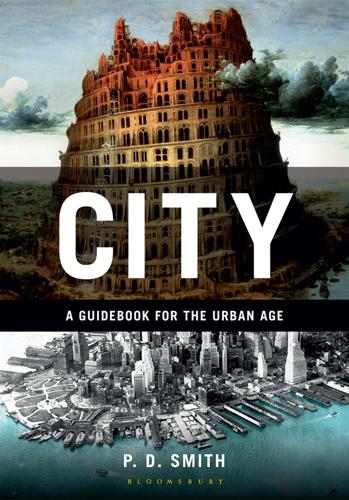
City: A Guidebook for the Urban Age
by
P. D. Smith
Published 19 Jun 2012
You know you are in the city centre and yet by a willing suspension of disbelief you convince yourself that you are in the countryside. The High Line cleverly exploits this sense of being simultaneously in the city and in nature. Although visitors appear to be walking on a country path, surrounded by wild flowers and grasses, they are in fact three storeys above the busy urban traffic. Their route takes them through canyons of tall buildings, before eventually arriving in the heart of the city. The High Line has been so successful that new buildings have been commissioned beside it and other cities, such as Rotterdam, are considering similar schemes.

Where Bigfoot Walks: Crossing the Dark Divide
by
Robert Michael Pyle
Published 31 Jul 2017
Barry and Jim proudly carried on, but only, as it turned out, for another day or so. The Dark Peak in March had chewed us up and spat us out. The Pennine Way would wait. Two summers later, lulled by Denver’s dry heat into forgetfulness of the aborted hike on the damp moors, I embarked on a walk along the High Line Canal, a century-old irrigation ditch running from the edge of the Rocky Mountains out onto the High Plains. I had held a lifelong fascination for the prairie watercourse and a desire to walk its entire ninety-mile length. I set out from Waterton with my heavy pack full of roasted soybeans, maps, cameras, plant presses, and other nonessentials.
…
Although walking is one of my primary pleasures, I am not by nature a long-distance trekker. So I should have known better than to think of crossing the Dark Divide to become more intimately acquainted with Bigfoot country and lore. Not that my objectives were terribly impressive. The distance was roughly comparable to that of the Pennine Way or the High Line Canal—something under a hundred miles. Much of it would be on trails, although there were some cross-country legs, and the terrain was a good deal rougher than anything in the Pennines. But dozens of people walk the entire Pacific Crest Trail, all 2,659 miles of it. I knew a singer-songwriter in Montana by the name of Walkin’ Jim Stoltz who has hiked well over eighteen thousand miles in the wilderness, and the meter is still ticking.

Coders: The Making of a New Tribe and the Remaking of the World
by
Clive Thompson
Published 26 Mar 2019
The models he used were so complex, and relied on so many assumptions fed into them, that he didn’t feel they were comprehensible; he also wasn’t convinced his work had any impact. As he produced thick, turgid reports, he started feeling like he was living in a Dilbert cartoon. “You do get disillusioned, working in the corporate world, because it’s all bullshit,” Michael told me bluntly, when we met on a cool spring morning, walking along the High Line, an elevated railway park in Manhattan. “I’d work for two weeks on a paper, and it’s, like, ‘No one’s ever going to read this. I know no one’s going to read this!’ ” He’d learned the basics of coding in college, and done a bit of it in his job. But he decided to go in deeper, so in his spare time he started programming more and more.
…
Having this impact—you get an idea, and boom, it’s there, it’s working, it’s helping someone out.” Over the next few hours, he sipped a coffee and puzzled away at the code for his app of that day. It would be a Twitterbot that would recognize whenever someone tweeted a photo of sculptures in the High Line park, and then tweet back info about the artist. He trained an AI image-classifier on photos of the sculptures; he plinked out code to check Twitter for #highline tagged pictures. By the time he finally got things working, he’d been hunched over his keyboard for twelve hours, and his back was aching.
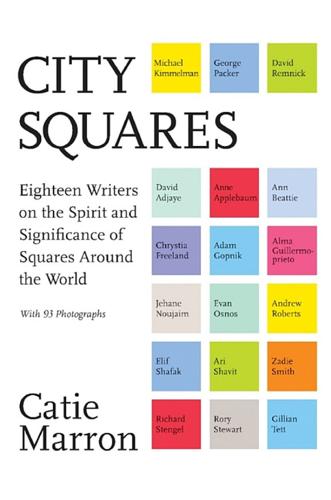
City Squares: Eighteen Writers on the Spirit and Significance of Squares Around the World
by
Catie Marron
Published 11 Apr 2016
I wish I could enjoy a meal with each of you in the public square in Van Gogh’s Arles! VINCENT VAN GOGH, Café-Terrace at Night, 1888. Photo by Erich Lessing/Art Resource ABOUT THE AUTHORS CATIE MARRON With a career that has encompassed investment banking, magazine journalism, and public service, Marron is currently chairman of the board of directors of Friends of the High Line; a trustee of the New York Public Library, where she was chairman of the board for seven years; and a contributing editor to Vogue. Also the editor of City Parks, she lives in New York City with her family. DAVID ADJAYE, OBE David Adjaye is the founder and principal architect of Adjaye Associates.

2312
by
Kim Stanley Robinson
Published 22 May 2012
The long stretch of skyscrapers looked like the spine of a dragon. The foreshortening effect as they got closer made the buildings look shorter than they really were, but their verticality was unmistakable and striking. A forest of dolmens! Swan got off the ferry at the Thirtieth Street Pier and walked on the broad catwalk between buildings to the High Line extension, where people filled the long plazas stretching north and south. Manhattan on foot: workers pushing narrow handcarts on crowded skyways, connecting island neighborhoods suspended between skyscrapers at differing heights. The rooftops were garnished with greenery, but the city was mostly a thing of steel and concrete and glass—and water.
…
Some of the submerged docks now held aquaculture pens, and Swan’s old partner Zasha apparently now ran a pharm on one of these piers, growing various piscean drugs and bioceramics while also doing things for the Mercury House—and for Alex. Swan had called ahead, and Zasha appeared at the fence that cut a floating dock off from the big plaza complex west of Gansevoort Street, at the south end of the High Line. After a brief hug, Z led her to the end of the dock and then out on the Hudson River in a boat, a smooth little hummer that soon had them midriver. Everything on the water moved at a watery pace, including the water itself. The Hudson River here was wide; the entire city of Terminator would have fit in New York Harbor.
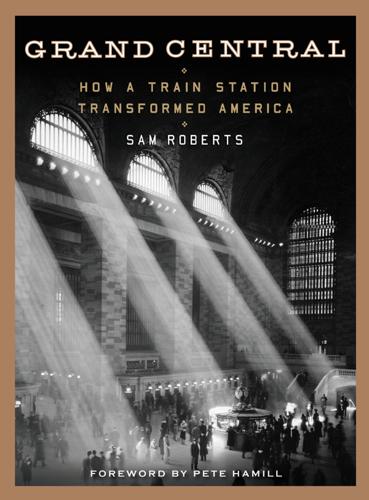
Grand Central: How a Train Station Transformed America
by
Sam Roberts
Published 22 Jan 2013
But constructing a riprap river wall and leveling the flinty rock surface to lay gradeless track was an engineering challenge, not an operating one, and within two years the trains were running north past Peekskill from a terminal at West 32nd Street and Ninth Avenue (a route that would extend downtown to Chambers Street on Ninth Avenue, paralleling in some places the former elevated freight tracks that were transformed into what is now the High Line park). By midcentury, the Harlem was facing fierce competition from what one of its advertisements warned were the “dangers and disasters incident to a road running on the margin of a deep river”—namely, the new Hudson River Railroad. The railroad’s route proved to be a testament to the inevitable political ascendancy of rail over river.

Great American Railroad Journeys
by
Michael Portillo
Published 26 Jan 2017
With the national network unravelling fast, the government stepped in to help form Amtrak in 1971, a quasi-state-run operation that would ensure the survival of passenger trains, despite associated financial implications. Still, a quarter of the nation’s routes, quested for and cherished in previous decades, fell into disuse. It wasn’t necessarily the end for derelict railroad lines, however. In New York, one urban railroad relic was transformed into a garden. The High Line in Manhattan was even planned to reflect the plants that grew at will around the tracks after it was finally abandoned in 1980. It is progress, though not the sort previously linked to railroads. Their time in the sun may be over, but the epic dynamism and scale that railroads brought to America during 100 years that neatly straddled two centuries will never be put in the shade.

Rebel Cities: From the Right to the City to the Urban Revolution
by
David Harvey
Published 3 Apr 2012
See also Paris Hardin, Garrett, 68, 6 9 , 7 0 , 7 5 , 7 9 , 80, Freddie Mac, 39, 45, 5 1 French Communist Party, 1 35-36 Common wealth, 1 52 Harlem, New York City, 1 09 Gapasin, Fernando, 1 34-35, 140 Haussman, Georges- Eugene, 7- 1 2 1 73n2 Hardt, Michael, 36, 67, 72, 78, 1 46-47; Haug, Wolfgang, 93 Gaudi, Antoni, 1 04 passim, 1 6, 42, 1 1 7, 1 30 Gehry, Frank, 1 04 Hezbollah, 1 1 7 Genoa, 1 1 6 the High Line, New York City, 75 H itler, Adolf, 1 07 George, Hen ry, 1 70n4 Georgia, 3 1 Germany, 1 5, 3 1 , 57, 1 08, 1 70n8. See also Berlin; Hamburg Gill, Leslie, 1 44, 145 Hittorf, Jacques Ignace, 7 Holland. See Netherlands Holl}"vood Ten, 1 34 Hong Kong, 1 2, 102 Giuliani, Rudolph, 1 05 Godard, Jean-Luc, x India, 1 4 , 1 5, 1 9, 2 1 , 22, 6 1 , 86, 1 1 9.
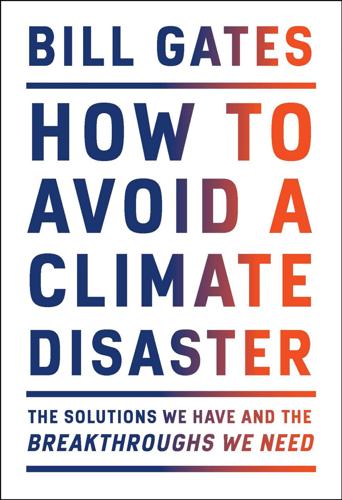
How to Avoid a Climate Disaster: The Solutions We Have and the Breakthroughs We Need
by
Bill Gates
Published 16 Feb 2021
Even though the global mean has gone up just 1 degree Celsius since preindustrial times, some places have already started experiencing temperature increases of more than 2 degrees Celsius. These regions are home to between 20 percent and 40 percent of the world’s population. Three lines you should know. These lines show you how much the temperature might go up in the future if emissions grow a lot (that’s the high line), if they grow less (lower), and if we start removing more carbon than we emit (negative). (KNMI Climate Explorer) Why are some places heating up more than others? In the interior of some continents, the soil is drier, which means the land can’t cool off as much as it did in the past. Basically, continents aren’t sweating as much as they used to.
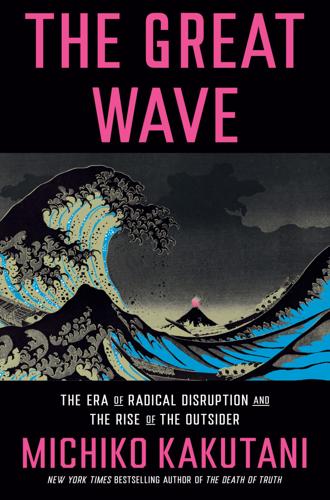
The Great Wave: The Era of Radical Disruption and the Rise of the Outsider
by
Michiko Kakutani
Published 20 Feb 2024
The terrorist attacks of 9/11 killed 2,753 people at the World Trade Center, and Lower Manhattan suffered an estimated $31 billion in economic damage. Under the direction of Mayor Michael Bloomberg, the city embarked on plans to not only rebuild the ravaged neighborhoods near Ground Zero but also implemented an ambitious redevelopment plan, featuring public-private partnerships that would lead to the construction of Hudson Yards and the High Line and building projects on both sides of the East River. Comebacks are part of New York’s DNA. The city rebounded after the 1970s, when it teetered on the brink of bankruptcy and more than a million people departed, driven out by high crime rates and fears that the city was in irreversible decline.
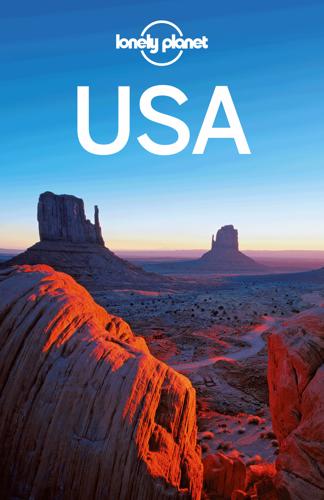
USA Travel Guide
by
Lonely, Planet
Top Five Scenic Drives » Catskills, New York – Rte 23A to 214 to 28 : This takes you past forested hills, rushing rivers and spectacular falls. » North Central, Pennsylvania – Rte 6 : A drive through this rugged stretch of mountains and woodlands includes gushing creeks, wildlife and state forests. » Lake Cayuga, New York – Rte 80 : Head north from Ithaca above the lake past dozens of wineries. » Delaware Water Gap, New Jersey – Old Mine Rd : One of the oldest roads in the US past beautiful vistas of the Delaware River and rural countryside. » Brandywine Valley, Pennsylvania – Rte 100, 52 and 163 : Only 25 miles through rolling horse country and lovely farmland. THE HIGH LINE Originally built in the 1930s to lift freight trains off Manhattan’s streets, the High Line is now a brilliantly designed elevated park that embraces the natural and industrial, from the Meatpacking District to Chelsea. Fast Facts » Hub cities: New York City (population 8,175,000), Philadelphia (population 1,526,000) » New York to Philadelphia: 97 miles » New York to Niagara Falls: 408 miles » Time zone: Eastern Standard » Number of politicians resigned or jailed after scandal: enough to fill the legislature Did You Know?
…
You’ll find incredibly diverse gourmet fare – dumplings, free-range herb-roasted chicken, lobster rolls, thin-crust pizzas, banh mi, BBQ, Colombian arepas, creme brulee and much much more. Find the best variety of trucks in NYC, LA, San Francisco, Austin and Portland. You can track down the action on twitter. THE HIGH LINE 2 NYC’s much loved new greenway, the Highline (Click here), has opened stage two, meaning you can now walk for almost a mile peacefully above the traffic following the former railroad tracks. ART-LOVING BOSTON 3 Boston’s Museum of Fine Arts (Click here) opened a spectacular new multimillion-dollar Art of the Americas wing with over 50 galleries of American art, covering everything from pre-Columbian to contemporary American works.
…
Two to Three Weeks East Coasting The great dynamo of art, fashion and culture, New York City is America at her most urbane. Spend four days exploring the metropolis, visiting memorable people-watching hoods such as the West and East Villages, the Lower East Side, Soho, Nolita and the Upper West Side, with a museum hop down the Upper East Side. Have a ramble in Central Park, stroll the High Line and take a detour to Brooklyn. After big-city culture, catch your breath at the pretty beaches and enticing charms of the Hamptons on Long Island. Back in NYC, catch the train to Boston , for two days visiting historic sights, dining in the North End and pub-hopping in Cambridge. Strike out for Cape Cod , with its idyllic dunes, forests and pretty shores.

When to Rob a Bank: ...And 131 More Warped Suggestions and Well-Intended Rants
by
Steven D. Levitt
and
Stephen J. Dubner
Published 4 May 2015
While I stand by my belief that the penny is lousy as currency, someone has finally come up with a use for pennies that has made me reconsider my extinction argument: make a floor out of them! The penny floor can be found at the Standard Grill at the new Standard Hotel in New York, the one straddling the High Line. The Standard tells us that it used 250 pennies per square foot, or 480,000 pennies in all. For those of you thinking about a home renovation, that’s $2.50 per square foot in flooring materials. That stacks up pretty well against glass tile ($25), polished marble ($12), porcelain ($4), or even prefinished walnut ($5).
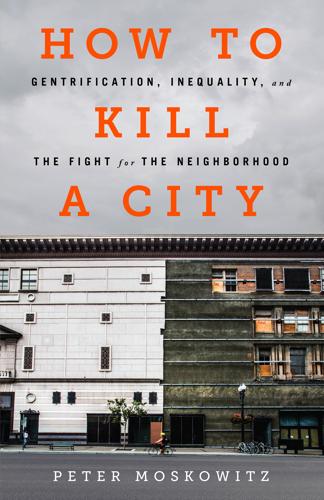
How to Kill a City: The Real Story of Gentrification
by
Peter Moskowitz
Published 7 Mar 2017
A little farther north is the meatpacking district, which was, quite literally, where they packed meat. I remember seeing bloody cow carcasses hanging from hooks and men in white smocks smoking outside the one diner there when I was a kid (the diner, inexplicably, has managed to stay open even as everything around it has closed). The High Line, once an abandoned elevated railway, has been turned into a park partially funded by the city but managed by a private group. It’s closed at night. It would be a nice space to hang out in were it not a conveyer belt for tourists who start in Midtown, walk briskly down the extensively policed High Line, and end up on the streets of my neighborhood.

Artificial Unintelligence: How Computers Misunderstand the World
by
Meredith Broussard
Published 19 Apr 2018
Waymo said on its website that it isn’t accepting press requests. Finally, to see the state of the art from a consumer perspective, I booked a test drive in a Tesla. On a bright, sunny, crisp winter morning, my family went to the Tesla dealer in Manhattan. The showroom is in the Meatpacking District, under the High Line, on West Twenty-Fifth Street. It’s surrounded by art galleries that used to be auto body shops. Across the street was a wrought-iron outline of a woman. Someone had yarn-bombed it, covering the metal. A peach-colored crochet bikini hung limply on the frame. We walked in and saw a red Model S sedan.
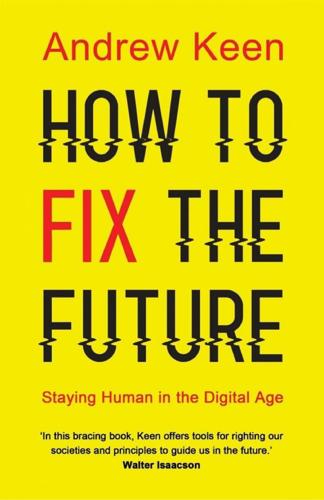
How to Fix the Future: Staying Human in the Digital Age
by
Andrew Keen
Published 1 Mar 2018
We are at the Betaworks studio in New York’s Meatpacking District—the downtown Manhattan neighborhood named after its industrial-scale slaughterhouses—which is now one of the city’s most fashionable areas. Along with its cobbled streets, boutique stores, exclusive clubs, and restaurants, the area is best known as being the southern terminus of the High Line—the section of the old New York Central Railroad that has been successfully reinvented as a three-mile-long elevated public park. Borthwick’s studio is located in a cavernous old brick building that has been converted from a decaying warehouse into an open-plan workspace. The place is lined with young computer programmers—Betaworks’ so-called “hackers in residence”—peering at electronic screens.

Butler to the World: How Britain Became the Servant of Tycoons, Tax Dodgers, Kleptocrats and Criminals
by
Oliver Bullough
Published 10 Mar 2022
I have a recurrent dream about opening a door in my house and wandering through room after room that I have for some reason never been into, and the old stations have that same appeal: free space thick with history and ripe with potential. And there is undeniably a business case for opening up old transport infrastructure; the High Line in Manhattan is just a long walkway to nowhere in particular, but people love the chance to stroll where the trains once rattled along, and do so in their thousands. That does not of course mean Chambers’s business idea was necessarily a viable proposition. For one thing, although dozens of stations have been closed over the years, there aren’t forty actual ghost stations in the sense of places you could walk into and convert into something new.

Mysteries of the Mall: And Other Essays
by
Witold Rybczynski
Published 7 Sep 2015
In any case, they have no choice—we’re all Venetians now. The recreational role of cities is demonstrated in what one might call tourist urbanism, of which New York City’s High Line is the most prominent example. Like Vienna’s early Ringstrasse and Paris’s more recent Promenade Plantée—old urban infrastructure transformed—the High Line is an example of McLuhan’s Law of Technological Second Lives. Downtown “The almighty downtown of the past is gone—and gone for good,” writes Robert Fogelson in Downtown, his stimulating new history of a long-neglected subject. “And it has been gone much longer than most Americans realize,” he continues.
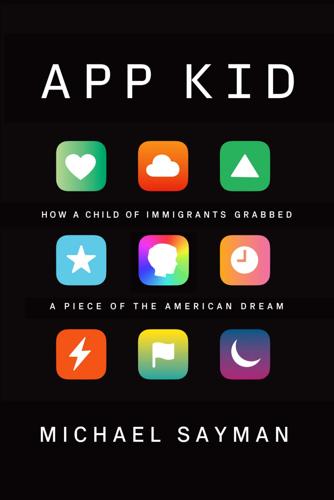
App Kid: How a Child of Immigrants Grabbed a Piece of the American Dream
by
Michael Sayman
Published 20 Sep 2021
I knew my family wasn’t interested in seeing the “authentic” New York. They wanted Aladdin on Broadway and Tiffany on Fifth Avenue and I Heart New York souvenirs—all the things we’d seen and done on our 2004 trip—and I wanted to fulfill every wish. On Christmas Eve, we took selfies at the Boathouse in Central Park; walked arm in arm down the High Line, blocking everyone’s way; popped into a store that sold only cookie dough; and ended up at the 9/11 Memorial Plaza, where all the trees were winter-bare and the bronze walls of the twin memorial pools were freezing cold, even through the three layers my mom made everyone wear. We were all in a row, propped on our forearms and looking down over the edge, even though you weren’t supposed to, listening to my dad’s detailed history of what had led to the terrorist attacks of 1993 and 2001—and the wars the United States had been waging in the Middle East ever since then.
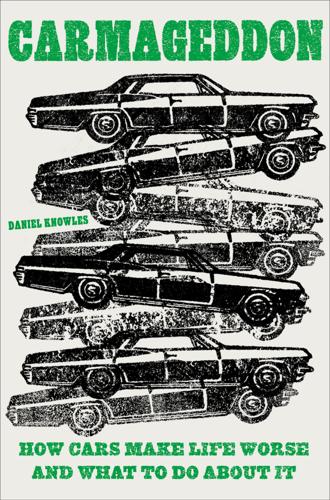
Carmageddon: How Cars Make Life Worse and What to Do About It
by
Daniel Knowles
Published 27 Mar 2023
The concrete tunnels that make up parts of the expressway now provide an eerie calm for cyclists to zoom through. The emergency telephone boxes and escape staircase that existed for motorists who broke down are still in place, but the fumes are gone. The open areas have become a sort of urban park along the river, with trees and benches. The Voie Georges-Pompidou feels a little like the High Line in New York. Where before there was constant traffic, now there are several open-air pop-up bars where you can buy a beer and watch families zoom past on bicycles. It is lovely. And yet closing the road was incredibly controversial and took more than a decade. The first to try it was Bertrand Delanoë, who served as mayor of the city of Paris from 2001 to 2014.
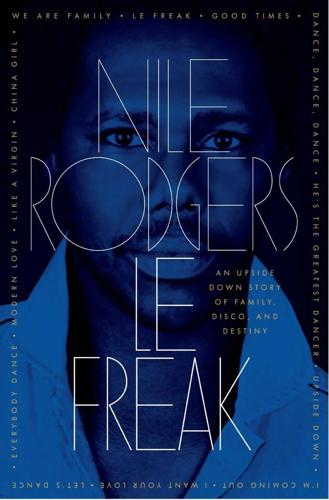
Le Freak: An Upside Down Story of Family, Disco, and Destiny
by
Nile Rodgers
Published 17 Oct 2011
You could look into the windows of your neighbors and see and hear composers writing show and jazz tunes at their pianos, like something out of Hitchcock’s Rear Window. From the south corner of our block looking right was the Bell Telephone Laboratory, with an elevated railroad track that ran right through the middle of the building. Today it’s part of the High Line Park, but back then, to my eyes, it was a world within a world, complete with a private transportation system. Standing in the lobby of my building and looking across narrow, Victorian-sized Greenwich Street, I’d see slaughtered livestock being moved onto loading docks, the meat swinging from large hooks.
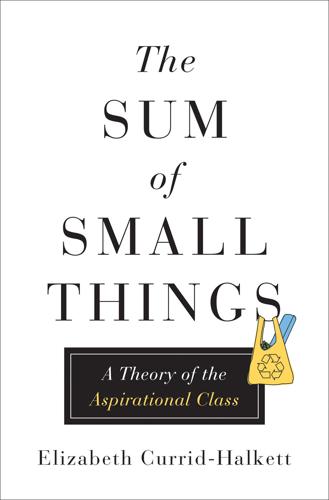
The Sum of Small Things: A Theory of the Aspirational Class
by
Elizabeth Currid-Halkett
Published 14 May 2017
Intelligentsia, born out of Chicago in the late 1990s, is one of the first post-Starbucks success stories. Unlike Starbucks, which has 13,000 stores nationwide, Intelligentsia only has nine—a few in Chicago, one in San Francisco, two in Los Angeles, and a newly opened branch in Manhattan, near the High Line in Chelsea. The important thing to keep in mind when talking to anyone who works for Intelligentsia is that it is nothing like Starbucks, barring the fact that both companies have convinced consumers to spend five dollars on a cup of coffee. However, where Starbucks adds a dollop of caramel and a cup or two of milk to make the consumer’s money worth it and essentially creates a liquid dessert, Intelligentsia has managed to get consumers to spend the same amount for a plain cup of coffee, dairy and syrup not included.
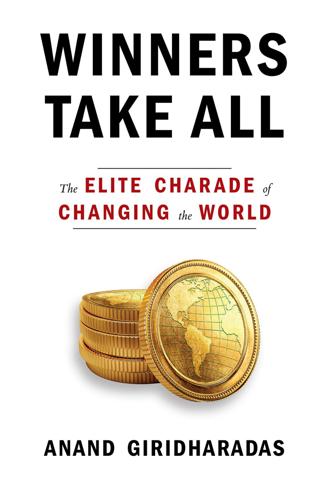
Winners Take All: The Elite Charade of Changing the World
by
Anand Giridharadas
Published 27 Aug 2018
In keeping with his official position and his own joyous magnetism, his careful irreverence, his attention to everyone in a room, he soared into the upper echelons of New York society. He was a member of the Council on Foreign Relations. He was on the boards of the city’s ballet, of Rockefeller Philanthropy Advisors, of Friends of the High Line. He began to be first-name-dropped. You know, Darren was saying the other day…Darren and I were on a panel, and…One day he would be at a White House state dinner for the Chinese president; another day he would be in Silicon Valley helping Mark Zuckerberg reflect on his giving. Even as he was establishing himself in big philanthropy, there were constant reminders of what his and his colleagues’ efforts were persistently failing to change.
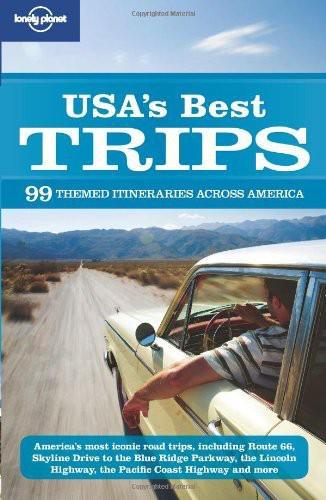
USA's Best Trips
by
Sara Benson
Published 23 May 2010
* * * Across town, the Meatpacking District, once a bastion of seedy leather bars, cow carcasses and prostitutes, has been aggressively gentrified over the past decade. It is now home to chic eateries, even chicer boutiques, and perhaps the most popular new attraction in the city: The High Line. Inspired by the Promenade Plantee in Paris, this is the first elevated park in New York. A wonder of urban reinvention, the High Line was an abandoned railway that ran from the meatpacking plants to the Westside rail yard. Locals banded to turn the tracks into much-needed public space in this section of Manhattan. It runs north from Gansevoort St to West 20th and is marvelous in every way.
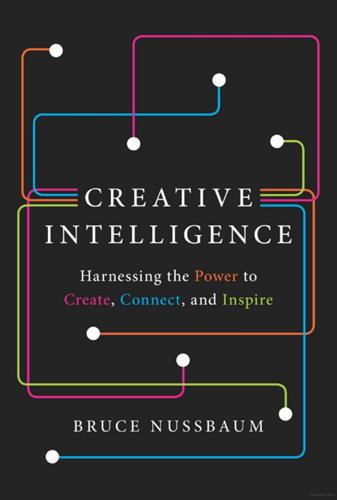
Creative Intelligence: Harnessing the Power to Create, Connect, and Inspire
by
Bruce Nussbaum
Published 5 Mar 2013
Walking alone is an excellent strategy for freeing your mind up so that you’re better able to bring together different areas of knowledge. You can keep a particular challenge in mind as you walk, or you can just look around and see what other inspirations strike you. Steve Jobs was a walker. Mark Zuckerberg is a walker. IDEO cofounder Bill Moggridge talked about walking the High Line in New York to find clarity and creative inspiration. Walking to a local park (or nearby beach, if you’re lucky) or even just around your neighborhood can give you the space you need to start mining the knowledge you’ve accumulated and connecting dots. And finding that neighborhood coffee shop to hang out and just think is important too.

The Heat Will Kill You First: Life and Death on a Scorched Planet
by
Jeff Goodell
Published 10 Jul 2023
Seoul, South Korea, spent $900 million to remove a highway and restore the Cheonggyecheon Stream in the middle of the city, which not only opened up much-needed green space, but also cooled the neighborhood around the stream by as much as ten degrees. To bring reclaimed water into the city to irrigate parks and green spaces, Athens plans to renovate an aqueduct first constructed by Roman Emperor Hadrian in 140 AD. New York City built the High Line, an elevated walk on the west side of the city that offers a leafy escape from urban concrete. Curitiba, Brazil, sometimes celebrated as the greenest city on Earth, has more than fifty square meters of green space per person (in contrast, Buenos Aires has two square meters per person). “We designed room for nature,” one Brazilian official said.

Why We Drive: Toward a Philosophy of the Open Road
by
Matthew B. Crawford
Published 8 Jun 2020
It is natural to suppose this is driven by liability concerns, but the taste for order tends to slip the bonds of any such calculation and become a kind of murky moralism: not something openly avowed but rather taken for granted, hard to grab hold of, and therefore hard to contest. Monchaux writes about the High Line in New York City, a wonderful park created with private financing out of an elevated railway that had long been out of service. He gives the park its proper due, but then notes that “its defining detail is the prim arrangement of metal pins and ropes that enforce the border between paving and planting.
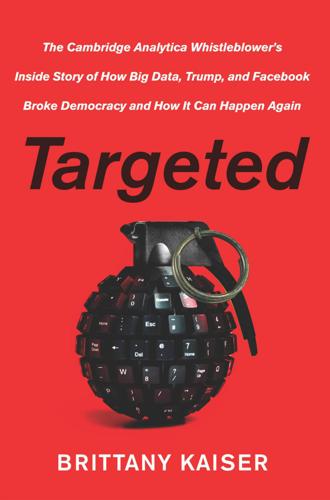
Targeted: The Cambridge Analytica Whistleblower's Inside Story of How Big Data, Trump, and Facebook Broke Democracy and How It Can Happen Again
by
Brittany Kaiser
Published 21 Oct 2019
Trump took Indiana and Kentucky, and Hillary took Vermont. I thought longingly of what was going on at the Javits Center, that cavernous place filled with Hillary supporters. I thought of how, later that night, the indoor celebrations would spill out into the streets, into Hell’s Kitchen and along the High Line; and how in Times Square, people would be drunk; and how in Central Park there would be fireworks. As precinct by precinct, county by county, numbers from all around the country rolled in, I became transfixed by the screens. Just as our data scientists had noted, the numbers in the swing states favored Trump.

Billionaires' Row: Tycoons, High Rollers, and the Epic Race to Build the World's Most Exclusive Skyscrapers
by
Katherine Clarke
Published 13 Jun 2023
Developers emboldened by the early success of projects like One57 and 432 Park sought to replicate them in other areas of Manhattan, building ultra-luxury supertalls that would rival Billionaires’ Row in terms of prices. High-rise condos were going up in the Financial District, at the southern tip of Manhattan, on the Upper West Side, and in NoMad, the moniker given by real estate insiders to the area just north of Madison Square Park. Clusters of new buildings had also appeared around the High Line, the new elevated park in Chelsea built on the site of a defunct rail line, and Hudson Yards, the Related Companies’ massive new city-within-a-city development on Manhattan’s Far West Side. Much of the inventory in these new towers was priced well beyond what had historically been achieved in these neighborhoods.
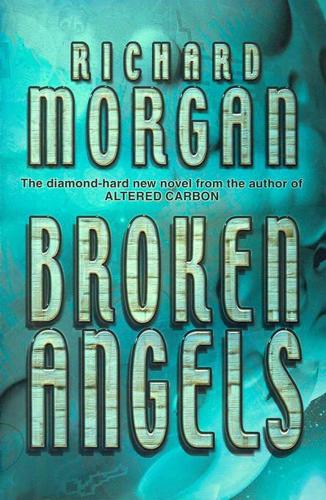
Broken Angels
by
Richard Morgan
Published 31 Aug 2008
I caught a glimpse of it represented on a series of helix-based transmission visuals, and then it faded, swallowed behind the wall of corporate data security systems and presumably beyond the tracking capacity of the promoter’s much-vaunted software. The green digit counters whirled into frantic, blurred eights. “Told you,” said the promoter, shaking his head judiciously. “High-line screening systems like that, would have cost them a year’s profits just for the installation. And cutting the high line costs, my friends.” “Evidently.” I watched our credit decay like an unprotected antimatter core and quelled a sudden desire to remove the promoter’s throat with my bare hands. It wasn’t really the money; we had plenty of that. Six million saft might have been a poor price for a Wu Morrison shuttle, but it was going to be enough for us to live like kings for the duration of our stay in Landfall.
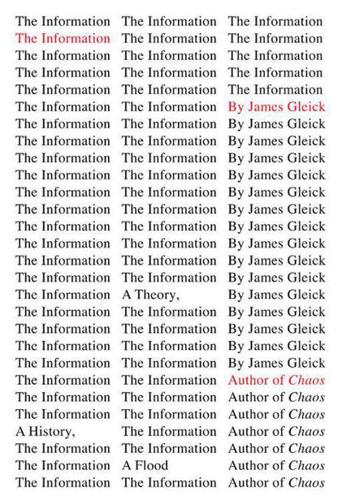
The Information: A History, a Theory, a Flood
by
James Gleick
Published 1 Mar 2011
The group designed tubes on the second floor and built them on the first floor and every so often Claude wandered over to visit. He and Betty began dating in 1948 and married early in 1949. Just then he was the scientist everyone was talking about. THE WEST STREET HEADQUARTERS OF BELL LABORATORIES, WITH TRAINS OF THE HIGH LINE RUNNING THROUGH Few libraries carried The Bell System Technical Journal, so researchers heard about “A Mathematical Theory of Communication” the traditional way, by word of mouth, and obtained copies the traditional way, by writing directly to the author for an offprint. Many scientists used preprinted postcards for such requests, and these arrived in growing volume over the next year.
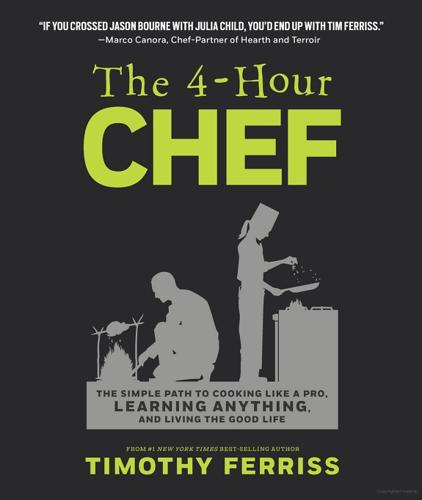
The 4-Hour Chef: The Simple Path to Cooking Like a Pro, Learning Anything, and Living the Good Life
by
Timothy Ferriss
Published 1 Jan 2012
After: 199.5 lbs, for a repulsive 4.3-lb gain. I had weighed in at 166.4 lbs “before.” Now, I shot up to 172 lbs, for a 5.6-lb gain after vomiting! That meant the Vermonsters weren’t the same size! I had eaten more!!! I spent the next four hours strolling through NYC with Roman, walking the High Line, discussing life, and working off calories. The very next morning, I girded my loins for a food marathon (#3 in our trifecta), and the day after that, I measured my body fat percentage with ultrasound. It was 12.7%, a full 3.8 points less than my pre-Vermonster 16.5%. If you play your cards as described in “Damage Control”, cheat day doesn’t have to be guilt day.
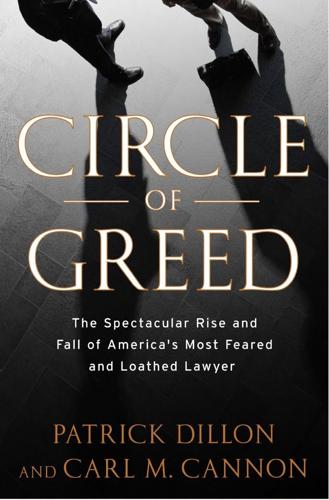
Circle of Greed: The Spectacular Rise and Fall of the Lawyer Who Brought Corporate America to Its Knees
by
Patrick Dillon
and
Carl M. Cannon
Published 2 Mar 2010
Perhaps the most moving tribute was provided by Patrick Coughlin, who spoke for all 190 of Meyerhoff’s law firm colleagues when he joked that often he, as managing partner, would be the last to know that Big Al had filed a costly case, almost always to right a social wrong, sometimes committing the firm to perform pro bono. In his short speech Coughlin focused this day on the high line of Meyerhoff’s accomplishments and the firm’s great cases—Lincoln, Enron, WorldCom, the Holocaust reparations, Big Tobacco—as well as those that were ongoing. The firm’s lawyers, Coughlin said at Meyerhoff’s memorial service, had dedicated themselves to fighting fraud, with, and now, without Bill Lerach, and remained very much in the fray.
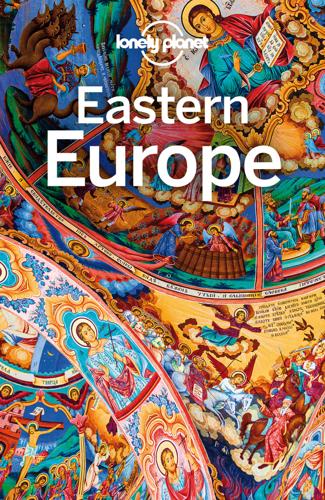
Lonely Planet Eastern Europe
by
Lonely Planet
,
Mark Baker
,
Tamara Sheward
,
Anita Isalska
,
Hugh McNaughtan
,
Lorna Parkes
,
Greg Bloom
,
Marc Di Duca
,
Peter Dragicevich
,
Tom Masters
,
Leonid Ragozin
,
Tim Richards
and
Simon Richmond
Published 30 Sep 2017
The site stood abandoned for years as oligarchs fought for the city's most desired patch of land, until Vladimir Putin intervened, telling everyone that he wanted it to become a park. No one was willing to argue, so now the area is being transformed into a 21st-century nature-meets-culture recreational space in a $10 billion project led by Diller Scofidio + Renfro, a US design bureau which oversaw the conversion of an old railroad into The High Line park in New York City. Due to be partially open in 2017, the new Zaryadye will be divided into four sectors, each showcasing one of Russia's typical landscapes – birch and fir tree forests, flood plain meadows and tundra. Towering above all that vegetation, a new building of Moscow Philharmonics is set to become yet another first-class musical venue in a city that admittedly already has no shortage of these.
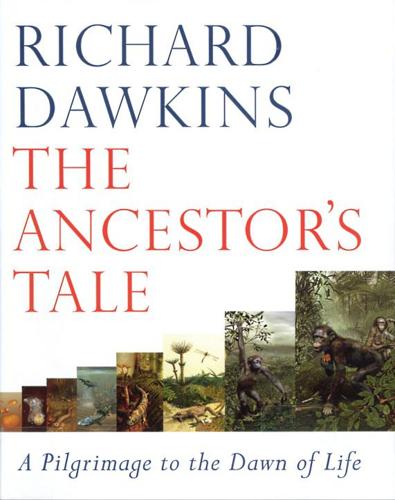
The Ancestor's Tale: A Pilgrimage to the Dawn of Evolution
by
Richard Dawkins
Published 1 Jan 2004
A 'high line' was selected for increased oil content, and a low line simultaneously selected for decreased oil. Fortunately this experiment has been continued far longer than the research career of any normal scientist, and it is possible to see, over 90 or so generations, an approximately linear increase in oil content in the high line. The low line has decreased its oil content less rapidly, but that is presumably because it is hitting the floor of the graph: you can't have less oil than zero. This experiment, like the Drosophila one and like many others of the same type, brings home the potential power of selection to drive evolutionary change very fast indeed.
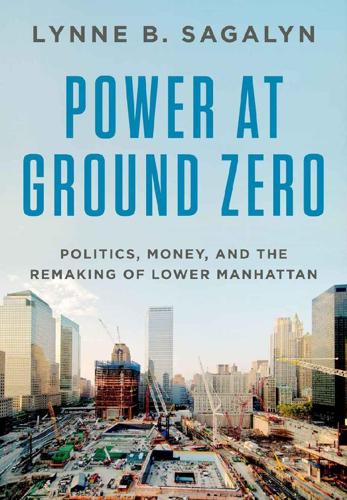
Power at Ground Zero: Politics, Money, and the Remaking of Lower Manhattan
by
Lynne B. Sagalyn
Published 8 Sep 2016
The city’s constant efforts to revive from whatever economic or social depression it was suffering often found expression in economic development projects, real estate visions of economic growth through the rebuilding of city districts: the original World Trade Center complex, Battery Park City, Times Square, Chelsea and the High Line, Hudson Yards on the West Side of midtown Manhattan, all are examples of district transformation. Although these projects reflect a heavy focus on Manhattan, under the Edward I. Koch administration in the 1980s the city adopted an “Other Borough” strategy aimed at stimulating the development of downtown business centers in Brooklyn, Queens, the Bronx, and Staten Island.